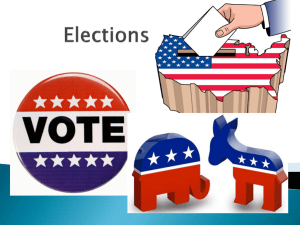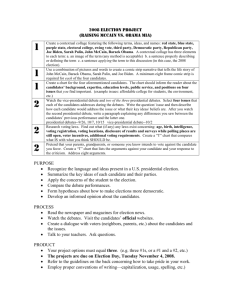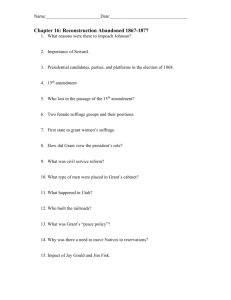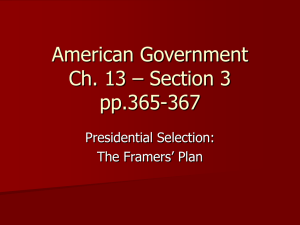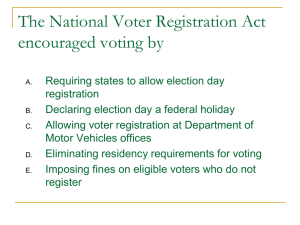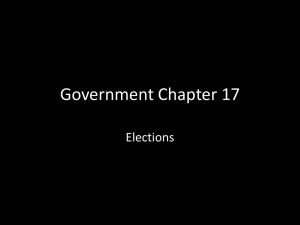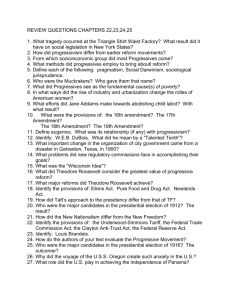File - AP Government Review
advertisement
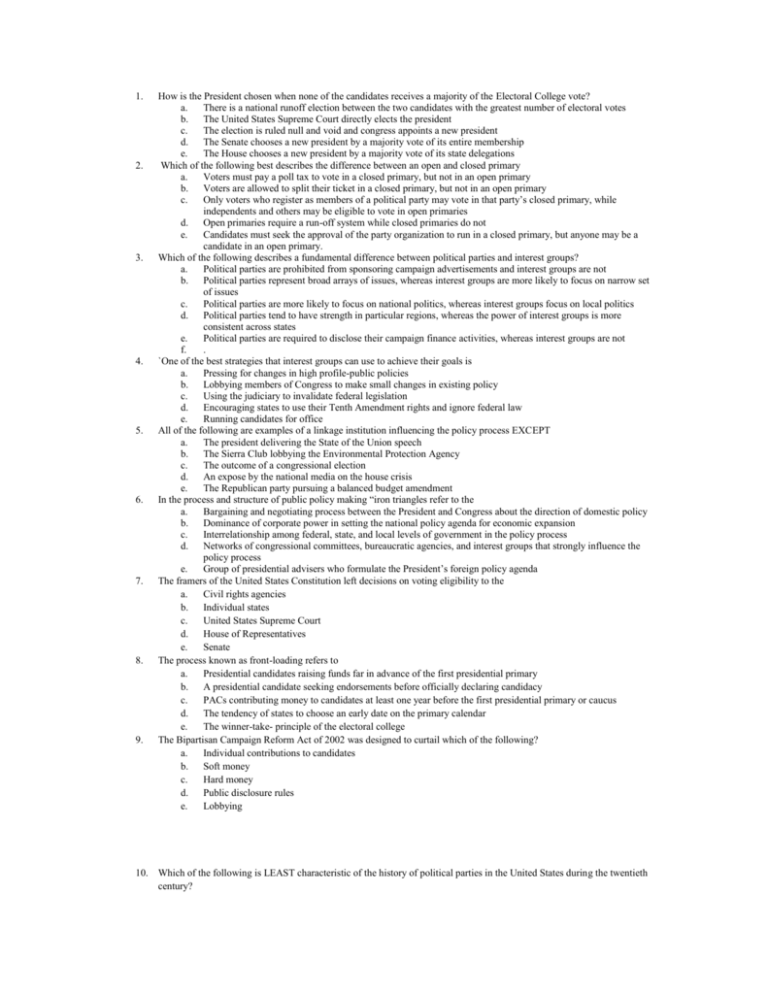
1. 2. 3. 4. 5. 6. 7. 8. 9. How is the President chosen when none of the candidates receives a majority of the Electoral College vote? a. There is a national runoff election between the two candidates with the greatest number of electoral votes b. The United States Supreme Court directly elects the president c. The election is ruled null and void and congress appoints a new president d. The Senate chooses a new president by a majority vote of its entire membership e. The House chooses a new president by a majority vote of its state delegations Which of the following best describes the difference between an open and closed primary a. Voters must pay a poll tax to vote in a closed primary, but not in an open primary b. Voters are allowed to split their ticket in a closed primary, but not in an open primary c. Only voters who register as members of a political party may vote in that party’s closed primary, while independents and others may be eligible to vote in open primaries d. Open primaries require a run-off system while closed primaries do not e. Candidates must seek the approval of the party organization to run in a closed primary, but anyone may be a candidate in an open primary. Which of the following describes a fundamental difference between political parties and interest groups? a. Political parties are prohibited from sponsoring campaign advertisements and interest groups are not b. Political parties represent broad arrays of issues, whereas interest groups are more likely to focus on narrow set of issues c. Political parties are more likely to focus on national politics, whereas interest groups focus on local politics d. Political parties tend to have strength in particular regions, whereas the power of interest groups is more consistent across states e. Political parties are required to disclose their campaign finance activities, whereas interest groups are not f. . `One of the best strategies that interest groups can use to achieve their goals is a. Pressing for changes in high profile-public policies b. Lobbying members of Congress to make small changes in existing policy c. Using the judiciary to invalidate federal legislation d. Encouraging states to use their Tenth Amendment rights and ignore federal law e. Running candidates for office All of the following are examples of a linkage institution influencing the policy process EXCEPT a. The president delivering the State of the Union speech b. The Sierra Club lobbying the Environmental Protection Agency c. The outcome of a congressional election d. An expose by the national media on the house crisis e. The Republican party pursuing a balanced budget amendment In the process and structure of public policy making “iron triangles refer to the a. Bargaining and negotiating process between the President and Congress about the direction of domestic policy b. Dominance of corporate power in setting the national policy agenda for economic expansion c. Interrelationship among federal, state, and local levels of government in the policy process d. Networks of congressional committees, bureaucratic agencies, and interest groups that strongly influence the policy process e. Group of presidential advisers who formulate the President’s foreign policy agenda The framers of the United States Constitution left decisions on voting eligibility to the a. Civil rights agencies b. Individual states c. United States Supreme Court d. House of Representatives e. Senate The process known as front-loading refers to a. Presidential candidates raising funds far in advance of the first presidential primary b. A presidential candidate seeking endorsements before officially declaring candidacy c. PACs contributing money to candidates at least one year before the first presidential primary or caucus d. The tendency of states to choose an early date on the primary calendar e. The winner-take- principle of the electoral college The Bipartisan Campaign Reform Act of 2002 was designed to curtail which of the following? a. Individual contributions to candidates b. Soft money c. Hard money d. Public disclosure rules e. Lobbying 10. Which of the following is LEAST characteristic of the history of political parties in the United States during the twentieth century? a. An increase in number of organized interest groups b. An increase in the influence of political action committees (PAC) money in congressional elections c. State adoption of direct primary elections d. The loss of party patronage power e. The splitting of the two major parties into a multiparty system 11. The term “Split-Ticket voting” is most accurately described as a. Turning in a spoiled or mutilated ballot as a form of protest b. Using separate ballots for candidates at the state and national levels c. Voting for candidates of different parties on the same ballot d. Voting Republican in one election cycle and Democratic in the next e. Voting for one party in the primary election and for another party in the general election 12. An election in which there is a significant shift in the bases of electoral support from one political party to another is called a a. Deviating election b. Maintaining election c. Dealigning election d. Primary election e. Realigning election 13. Interest groups and Super PACs are protected under the Constitution by the a. Provisions of Article 1, Section 8 b. First Amendment c. Ninth Amendment d. Tenth Amendment e. Fourteenth Amendment
